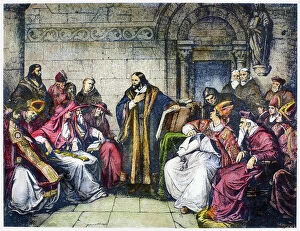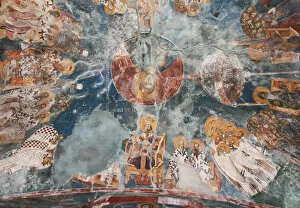Ecumenical Council Collection
The Ecumenical Councils: Uniting Faith and Shaping History Throughout history, the Ecumenical Councils have played a pivotal role in shaping the course of Christianity
All Professionally Made to Order for Quick Shipping
The Ecumenical Councils: Uniting Faith and Shaping History Throughout history, the Ecumenical Councils have played a pivotal role in shaping the course of Christianity. These gatherings brought together religious leaders from different regions to discuss matters of doctrine, resolve conflicts, and establish unity within the Church. One such significant council was the Council of Constance in 1414. Here, Bohemian religious reformer Jan Hus found himself at odds with established beliefs. This wood engraving from the 19th century captures his presence as he passionately defended his views amidst heated debates. Another milestone event was the First Council of Nicaea during the first half of the 16th century. The artist Strelitzas beautifully depicts this gathering led by Theophanes (Theophanes the Cretan). It was here that crucial decisions were made regarding theological controversies and resulted in what is known today as the Nicene Creed. Moving forward to later centuries, we encounter another influential council - The Council of Trent held between 1545-1563. A chromolitho print showcases this momentous assembly where Catholic leaders addressed issues raised by Protestant Reformation while reaffirming traditional teachings. An intriguing glimpse into history can be seen through Speculum Romanae Magnificentiae's depiction of The Council of Trent in 1565. This artwork provides us with a visual representation capturing both grandeur and solemnity present during these ecclesiastical meetings. Fast forwarding to more recent times, an anonymous artist portrays The Ecumenical Council of Nicea in 1882. This image reminds us that even after centuries since its inception, ecumenism remains relevant as it continues to foster dialogue among diverse Christian denominations for greater understanding and cooperation. Historically significant moments are also depicted through art like Emperor Constantine burning Arian books during the 1640s by Carlo Magnone.














